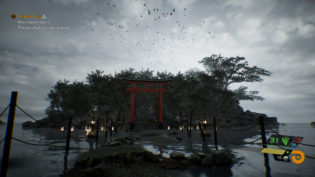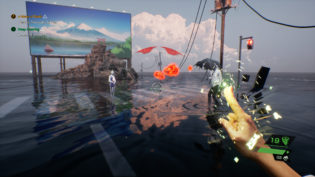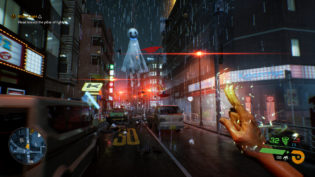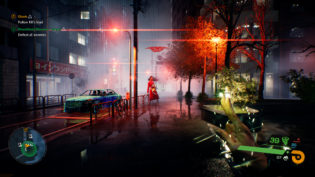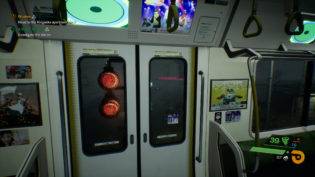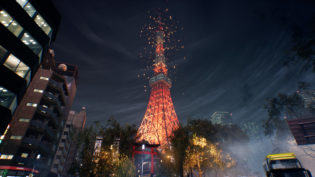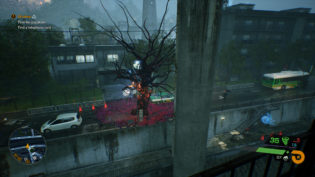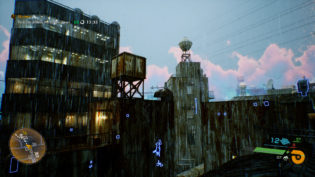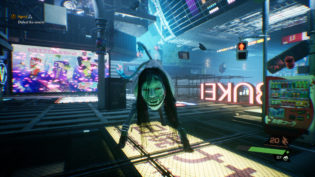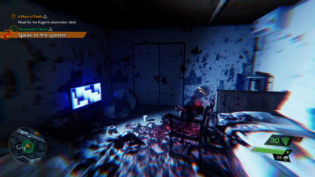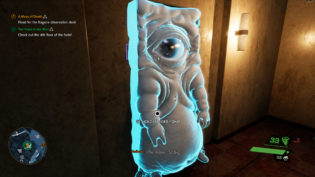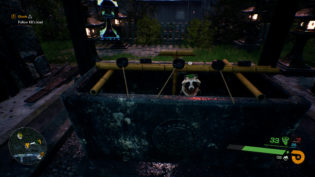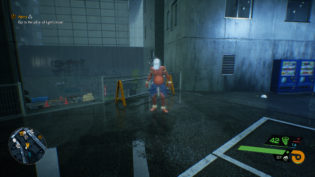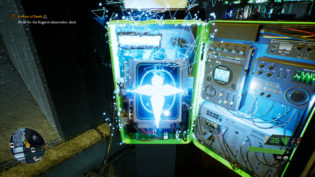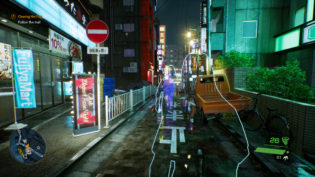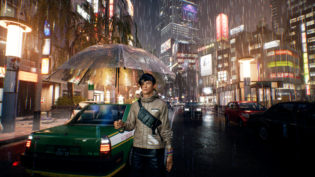I remember when Ghostwire: Tokyo was first announced and everyone thought it looked really cool but also had no idea what the game is supposed to be. Turns out, it’s a first person perspective open world action adventure with an immersive sim flavor which plays rather well, even if not without many flaws. But it still looks really cool.
So, I’ve described what the game could be classified as, but what does that mean exactly? The first person perspective aspect is self-explanatory – while many cutscenes break use conventional camera shots, all of the gameplay happens from the FP view. And this gameplay consists of several big parts. It’s combat that uses magic, a special ghost hunting bow and magic talismans to add flavor to the attacks that are otherwise rather archetypal for an action game. I mean – visually you do cool hand gestures and shape water into projectiles, but in practice it’s your typical videogame shotgun. There’s also a stealth aspect, which is handled relatively fine, but is here more to lead to combat, rather than being a substitute to it. Think Far Cry rather than Thief or Dishonored here – vast majority of action encounters are unavoidable and stealth won’t help you there.
But it does help in the world exploration which is the last big thing of the game. You have, as I understand, the entire territory of Shibuya in Tokyo to explore. And you do it not just horizontally, but vertically too with the ability to climb, glide in the air and use special grapple points to get to the high ground. This is where the game is very reminiscent of something like Dishonored or recent Deus Ex titles. The ability to systemically climb and get to places “you’re not supposed to”, except not on a scale of a big level, but on a scale of a huge part of a city, several 30+ story buildings included.
All this said, I can’t say that any of the above gameplay aspects are particularly well implemented. The combat is quite fun, has several interesting hooks and ideas, but doesn’t evolve past the few hours as newer versions of the yōkai (the supernatural enemies of the game based on the Japanese folklore) never vary the tactic you use to fight them. They might take more hits to take, more blocks to nail, maybe a few different patterns of dodging their attacks, sure. But it’s all very minor and the combat gets somewhat samey after a while, if never stale. Stealth stays “neat”, but never becomes interesting. And the traversal mechanics are just surprisingly imprecise. For example, the game often refuses to let you jump on downward slope surfaces. Or grab the edges of many objects to climb, leading to many frustrating moments where the simplest movement feels sloppy instead of fun and rewarding.
The open world aspect is also more of a chore than a fun thing. It’s neat to see a real world location recreated, and it sure as heck looks fantastic (especially if you can crank up the visuals to the max settings), but the vast majority of this space is used for completely uninspired and throwaway collectibles. The side cases are great, if often short. The way you unlock the new parts of the map is the typical Ubisoft game thing, but at least it’s not that boring. The locations used for main story events are interesting. But the rest of the stuff is at best bad, at worst just evil. The spirit collecting task, for example, is the single worst collectible I’ve encountered in my life. Not only are there hundreds of them everywhere, making you pay no attention to this recreated real life location because you’re focused on the floating crap, but to complete the collection you’re also dependent on a random chance event that you might not even encounter in real gameplay. And if you do, you will probably run away because that’s what the game teaches you to do in the very first cutscene. Astonishingly moronic even on paper, yet this got into the game.
At this point you might be thinking that the game doesn’t sound that great… But Ghostwire: Tokyo has such a great visual identity and such a wonderfully creative approach to its world, the enemies and mythology that just this alone may keep you engaged. This game is basically doing with the Japanese folklore, mythology and horror tropes what Control did with the European and US horror tropes. And I would argue, that Ghostwire has even more charm and creativity with how it approaches a similar concept. It’s not the story, which is rather average as well, but it’s the setting that is really engaging and wonderfully realized. I’d love to see more tales in this setting, with other unrelated characters and even mechanics. Just give me more of these crazy designs, urban horror stories and folklore in the digital age.
For the world and the style alone, I’d argue that Ghostwire: Tokyo is worth checking out. It’s gameplay isn’t fantastic, but it’s competent enough to provide you with a really fun experience that will, if nothing else, inspire you. Safely ignore the collectibles (unless you really want to please the cats), but do not ignore the side cases and enjoy the ride through the main event.




